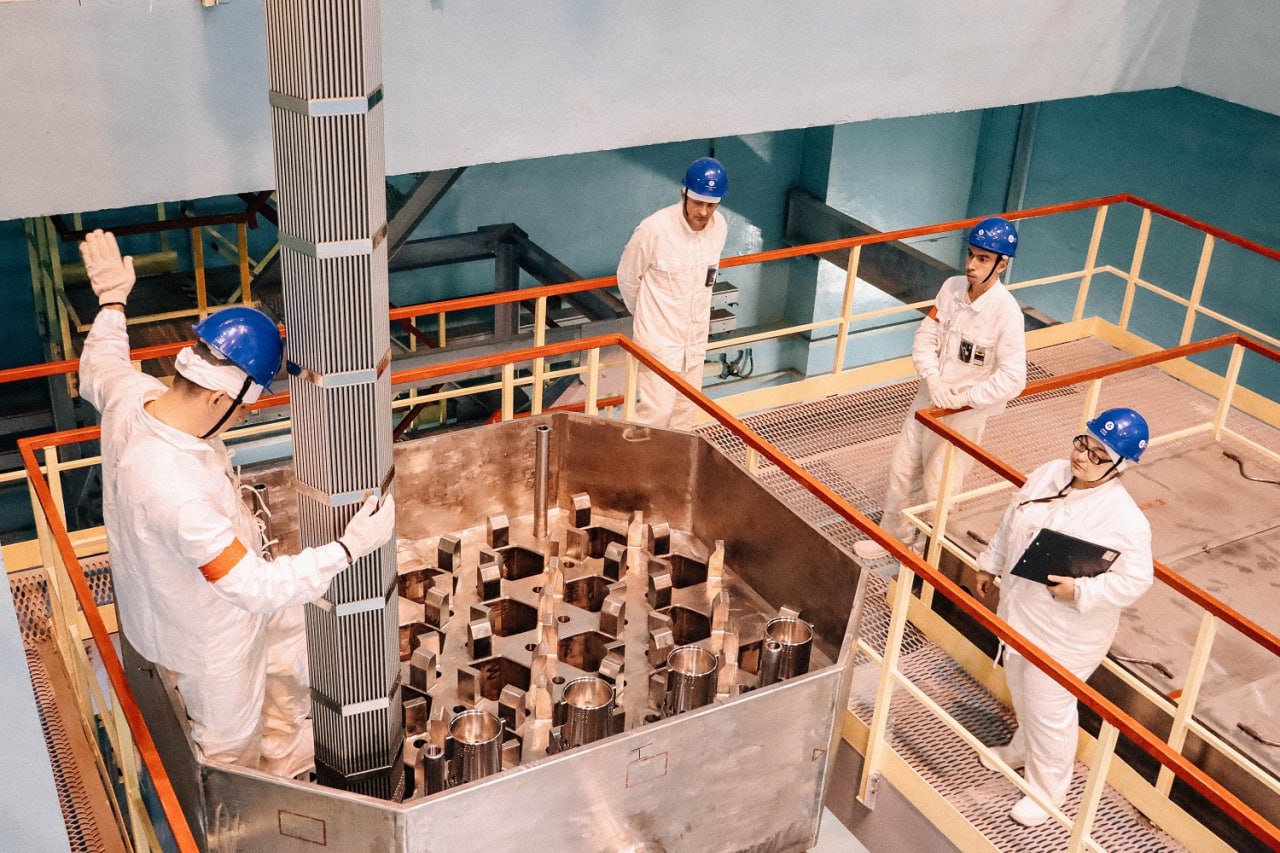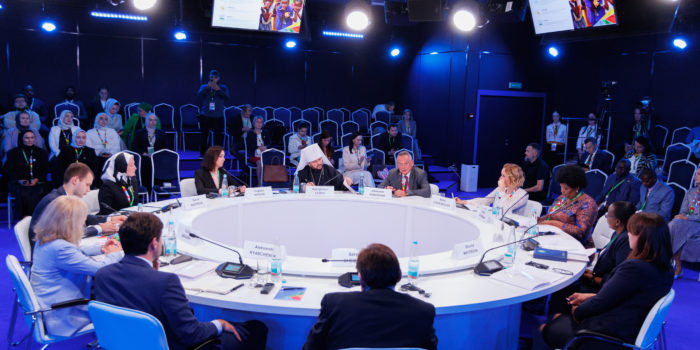At power unit No. 6 of Novovoronezh NPP, a batch of fifth-generation nuclear fuel assemblies TVS-5 has been loaded into the VVER-1200 reactor core for the first time. The refueling has been accomplished during the scheduled maintenance shutdown. The fuel bundles manufactured by the Novosibirsk Chemical Concentrates Plant (an enterprise of Rosatom's Fuel Division) will undergo pilot operation in three 18-month fuel cycles.
The design features of TVS-5 enable fabrication of VVER-1200 fuel bundles in a fully automated mode, which is necessary for development of industrial-scale fabrication of uranium-plutonium fuel for VVER reactors. This, in turn, is a part of implementation of the strategic shift to the dual-component nuclear power system with closed nuclear fuel cycle.
“One of the tasks for closing the nuclear fuel cycle within the dual-component nuclear power system is introduction of fuel made of regenerated nuclear materials, including the classical thermal neutron reactors. This requires development of industrial-scale production, which should be fully automated, just like fuel fabrication for the fast reactors. The start of TVS-5 at Novovoronezh NPP is a necessary step for validation of such fabrication project. This is an important milestone achieved by the joint team from Rosatom's Fuel, Energy and Machine-Building Divisions,” commented Alexander Ugryumov, Senior Vice President for Research and Development at TVEL, the head company of the Fuel Division.
The bundles of the new design will ungergo the pilot operation with a regular fuel matrix based on enriched uranium dioxide in compliance with the license issued by Rostechnadzor in strict coordination with the Russian national regulator.
“Novovoronezh NPP once again confirms its status as a site of advanced technologies implementation. Loading fifth-generation fuel into the VVER-1200 reactor core is an important stage on the way to closing the nuclear fuel cycle. We take an active part in the implementation of Rosatom's key projects, which make a significant contribution to the future of the Russian nuclear power industry and open new opportunities for the entire industry,” said Vladimir Povarov, Director of Novovoronezh NPP.
Thermal light-water reactors of the VVER type make-up the backbone of the nuclear power industry in Russia and are widely operated abroad at NPPs of Russian design.
The Russian nuclear industry development strategy for decades ahead is aimed at development of the dual-component nuclear power industry with thermal and fast neutron reactors, introducing the solutions of the closed nuclear fuel cycle, such as fabrication of fresh uranium-plutonium fuel from spent fuel. As fast reactors become more widespread, a balance in the “circulation” of nuclear fuel materials between fast and thermal reactors is expected to be achieved.
Rosatom’s Electric
Power division is the
major producer of clean energy in Russia. The division’s management company,
Rosenergoatom, Joint-Stock Company, operates 11 nuclear power plants, including
the world’s only floating nuclear power plant (FNPP). 35 power units with a
combined capacity of 28.5 gigawatts account for approximately 19 % of the
electricity generated in Russia. The division offers a comprehensive range of
services, including commissioning, repair and maintenance, as well as training
personnel of nuclear power plants. Additionally, the division’s companies
produce isotopes for medical, agricultural, and microelectronic applications.
The division is actively working in new areas such as the development of
charging infrastructure for e-vehicles, biogas stations, and the manufacturing
of industrial robots. www.rosenergoatom.ru
Nuclear Fuel Division of Rosatom includes enterprises for fabrication of nuclear fuel, uranium conversion and enrichment, production of gas centrifuges, as well as research and development organizations. As the sole supplier of nuclear fuel for Russian NPPs, TVEL provides fuel for more than 70 power reactors in 15 countries, research reactors in nine countries and propulsion reactors of the Russian nuclear fleet. Every sixth power reactor in the world is fueled by TVEL. Rosatom’s Fuel Division is the world’s largest producer of enriched uranium, as well as the leader of the global stable isotope market. www.tvel.ru
The Balanced Nuclear Fuel Cycle (NFC) is a concept of Rosatom based on innovative practical solutions in the field of closing the nuclear fuel cycle, allowing for efficient reprocessing of irradiated nuclear fuel and rational management of reprocessing products, both useful (uranium, plutonium) and destined for disposal (fission products). A balanced NFC sets as its main objective a fundamental reduction in the volume and activity of radioactive waste sent for disposal. Balanced NFC allows to: increase the safety of nuclear waste management and reduce environmental risks; solve the problem of future generations and ensure a sustainable pattern of consumption and production; minimize the volumes and hazard levels of waste to be disposed of; re-involve valuable raw materials in the NFC – recycle nuclear materials.
Thermal light-water reactors of the VVER type make-up the backbone of the nuclear power industry in Russia and are widely operated abroad at NPPs of Russian design. The Russian nuclear industry development strategy for decades ahead is aimed at development of the dual-component nuclear power industry with thermal and fast neutron reactors, introducing the solutions of the closed nuclear fuel cycle, such as fabrication of fresh uranium-plutonium fuel from spent fuel. As fast reactors become more widespread, a balance in the “circulation” of nuclear fuel materials between fast and thermal reactors is expected to be achieved.





